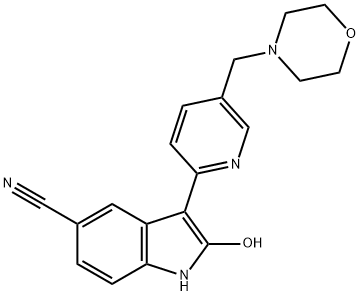SAFETY INFORMATION
| Signal word | Warning |
|---|---|
| Pictogram(s) |
 Exclamation Mark Irritant GHS07 |
| GHS Hazard Statements |
H302:Acute toxicity,oral H315:Skin corrosion/irritation H319:Serious eye damage/eye irritation H335:Specific target organ toxicity, single exposure;Respiratory tract irritation |
| Precautionary Statement Codes |
P261:Avoid breathing dust/fume/gas/mist/vapours/spray. P305+P351+P338:IF IN EYES: Rinse cautiously with water for several minutes. Remove contact lenses, if present and easy to do. Continuerinsing. |
COMPUTED DESCRIPTORS
| Molecular Weight | 334.4 g/mol |
|---|---|
| XLogP3 | 1.8 |
| Hydrogen Bond Donor Count | 2 |
| Hydrogen Bond Acceptor Count | 5 |
| Rotatable Bond Count | 3 |
| Exact Mass | 334.14297583 g/mol |
| Monoisotopic Mass | 334.14297583 g/mol |
| Topological Polar Surface Area | 85.2 Ų |
| Heavy Atom Count | 25 |
| Formal Charge | 0 |
| Complexity | 501 |
| Isotope Atom Count | 0 |
| Defined Atom Stereocenter Count | 0 |
| Undefined Atom Stereocenter Count | 0 |
| Defined Bond Stereocenter Count | 0 |
| Undefined Bond Stereocenter Count | 0 |
| Covalently-Bonded Unit Count | 1 |
| Compound Is Canonicalized | Yes |
PRODUCT INTRODUCTION
description
AZD1080 is a member of the class of hydroxyindoles that is 1H-indole substituted by hydroxy, 5-(morpholin-4-ylmethyl)pyridin-2-yl, and cyano groups at positions 2, 3 and 5, respectively. It is a potent, brain permeable inhibitor of human GSK3alpha and GSK3beta with Ki of 6.9 nM and 31 nM, respectively. The drug was being developed by AstraZeneca for the treatment of Alzheimer's disease (clinical trial now discontinued). It has a role as an EC 2.7.11.26 (tau-protein kinase) inhibitor, a tau aggregation inhibitor, an antineoplastic agent and an apoptosis inducer. It is a member of morpholines, a member of pyridines, a member of hydroxyindoles, a nitrile and a tertiary amino compound.
